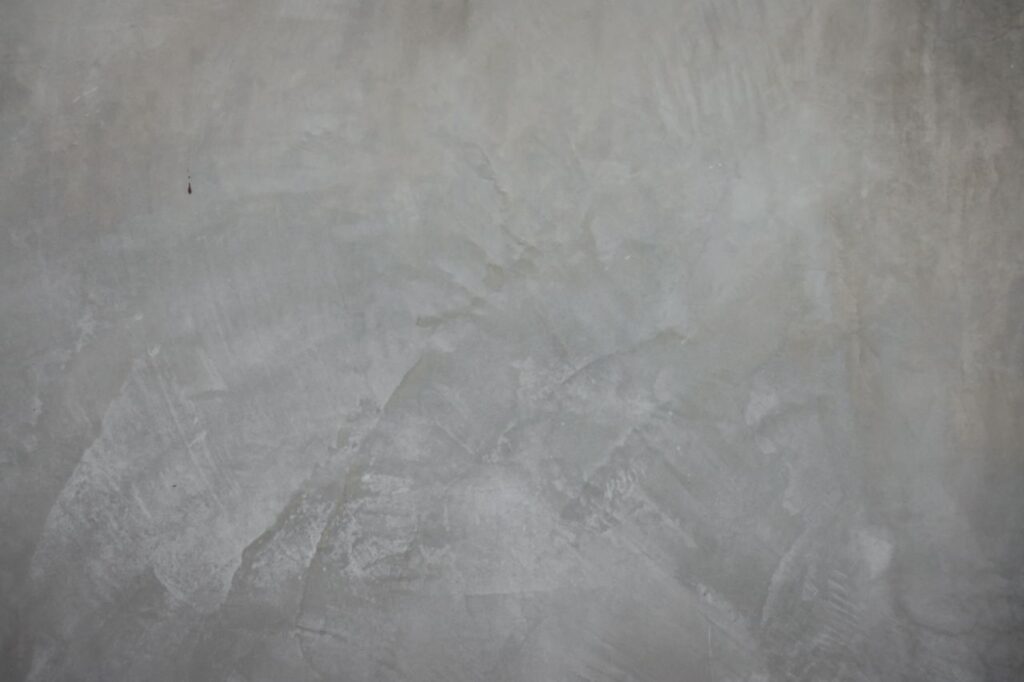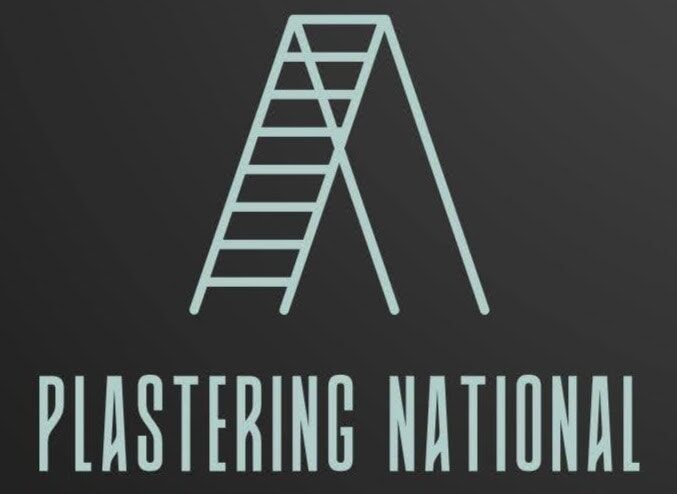Plastering, a term familiar to many in the construction and renovation industry, encompasses various techniques and materials used to coat, protect, and beautify walls and ceilings. This age-old practice, integral to the finishing touches of buildings, goes by various names and forms, each with unique characteristics and applications. But what exactly is plastering also called, and why does it hold such significance in construction and interior design? In this blog, we will delve into the fascinating world of plastering, exploring its different terminologies, methods, and the pivotal role it plays in shaping our living spaces’ aesthetic and structural integrity. Join us as we uncover the layers of history, craftsmanship, and innovation that define plastering, a skill that transcends mere construction to become an art form in its own right.
The Essence Of Plastering
Plastering, a craft as ancient as the buildings we dwell in, encompasses more than just applying a material to walls and ceilings. It is an art form that has evolved over millennia, serving functional and decorative purposes. Known also as “pargeting” in some regions, plastering has been a fundamental aspect of building construction for centuries, offering a smooth or textured finish to surfaces and providing a base for painting and decoration.
Historical Roots And Evolution:
The earliest known plasters were lime-based, discovered in the prehistoric settlements of ‘Ain Ghazal in Jordan, where lime mixed with unheated crushed limestone was used. This practice spread across ancient civilizations, from India and China, where clay and gypsum plasters polished rough stone walls, to Egypt, where lime and gypsum plaster adorned the walls of tombs. The Romans, known for their architectural prowess, utilized lime and sand mixtures, enhancing them with marble dust for a smooth finish, a technique that re-emerged during the Renaissance.
Diverse Materials And Techniques:
The core materials of plaster have remained consistent-gypsum, lime, and cement-each selected for specific properties, from rapid setting to breathability and flexibility. Adding hair or fibres for reinforcement and various aggregates for texture has allowed for a wide range of applications, from simple protective coatings to elaborate decorative mouldings.
Cultural Significance And Applications:
Plastering transcends mere construction, embedding cultural significance into the fabric of architecture. In medieval Europe, gypsum plaster was used for internal and external finishes, often reinforced with hair and augmented with malt, urine, or beer to improve plasticity. The 14th century saw the rise of decorative plasterwork, or pargeting, in South-East England, a testament to the craft’s aesthetic potential.
Modern Innovations And Practices:
The introduction of Portland cement in the 19th century revolutionized plastering, offering a more complex, durable material suitable for new construction techniques. Today, plastering adapts to modern demands through eco-friendly materials and innovative applications, from ornamental designs to fireproofing.
The Art And Science Of Plastering:
Plastering represents a unique blend of art and science, requiring technical skill to mix and apply materials and artistic vision to create finishes that enhance the beauty of buildings. It is a craft honed by plasterers through years of experience, a tangible connection to the past, and a key component of our built environment.
Various Terminologies Of Plastering
Plastering, a craft integral to building construction and finishing, encompasses various terms that describe its materials, techniques, and finishes. Understanding these terms enriches one’s knowledge of the craft and aids in better communication among professionals and clients. Here, we compile and explain some critical terminologies from authoritative sources within the plastering domain.
Key Terms and Their Meanings:
Accelerators and Retarders: Substances added to plaster to modify its setting time. Accelerators speed up the setting process, which is helpful in cooler climates or when the quick setting is desired. Retarders slow down the setting time, which is beneficial in hot weather or for intricate work that requires more working time.
Acoustical Plaster: A type of plaster designed to absorb sound, reducing reverberation and improving the acoustic properties of a room.
Aggregate: Inert materials like sand, perlite, or vermiculite are added to plaster to extend coverage, reduce shrinkage, and sometimes lower costs. Aggregates also influence the texture and finish of the plaster.
Alabaster: A form of gypsum used for ornamental works due to its softness and ease of carving.
Basecoat and Finish Coat: The basecoat is the initial layer of plaster applied over lath or a substrate, providing a base for the finish coat, the final, visible layer. The finish coat determines the texture and appearance of the surface.
Bonding Agent: A material applied to a surface to improve the adhesion of subsequent plaster layers.
Brown Coat: The second coat in a three-coat plaster system, applied over the scratch coat and beneath the finish coat, provides bulk and strength to the plasterwork.
Casting Plaster: A high-strength plaster used for creating decorative elements or moulds due to its delicate texture and detail-capturing ability.
Dot and Dab: A method where dots of adhesive plaster are used to attach plasterboard to walls, allowing for a smooth finish without needing a wet plaster base.
Dry Lining: A technique where plasterboard is fixed to walls or ceilings, then finished with a skim coat of plaster, offering a quicker and cleaner alternative to traditional wet plastering.
Gypsum Plaster: Plaster made primarily from gypsum, known for its quick setting times and smooth finish. It is commonly used for interior walls and ceilings.
Lime Plaster: Made from a mixture of lime and sand, lime plaster is breathable and flexible, making it suitable for historical restorations and eco-friendly buildings.
Plaster of Paris: A quick-setting gypsum plaster for casting moulds and decorative elements. It sets hard and can be carved or sculpted.
Rendering: Applying a sand and cement mixture to exterior walls, providing protection and a textured finish.
Skimming: Applying a thin, final coat of plaster to smooth and finish the surface of walls or ceilings, often over plasterboard.
Stucco: A decorative plaster used for exterior walls, often textured and sometimes coloured, providing aesthetic appeal and protection against the elements.
FAQs About Plasterer
What Are Other Names For Plastering?
Plastering is also known as “pargeting” in some regions, mainly when referring to the decorative plastering of walls and ceilings. Other terms related to specific types of plastering include rendering, skimming, and Stucco.
What Is The Difference Between Plastering And Rendering?
Plastering generally refers to work done on interior walls, whereas rendering is used for exterior walls. The main difference lies in the materials used and the durability required for exterior exposure to weather.
What Is Skimming In Plastering?
Skimming is a plastering technique that involves applying a thin coat of plaster to walls and ceilings to achieve a smooth and flawless surface. It’s often the final step in plastering, especially over plasterboard.
What Materials Are Commonly Used In Plastering?
Common materials used in plastering include gypsum, lime, and cement. Each material has specific properties that make it suitable for applications, such as rapid setting, breathability, and flexibility.
Why Is Lime Plaster Considered Eco-Friendly?
Lime plaster is considered eco-friendly because it is made from natural lime, less energy-intensive than cement. Lime plaster also allows buildings to “breathe,” reducing the risk of trapped moisture and improving indoor air quality.
Types Of Plastering Materials
Plastering has been an essential part of construction since ancient times, providing a protective layer over structures and a smooth finish for aesthetic purposes. The choice of plastering material can significantly affect buildings’ durability, appearance, and functionality. Here, we explore the various plastering materials used in construction, each with unique properties and applications.
Cement Plaster:
Cement plaster is a mixture of Portland cement, sand, and water. It is known for its strength and durability, making it suitable for interior and exterior surfaces. Cement plastering, often called rendering when applied to exteriors, provides a robust surface resistant to weathering and environmental conditions. The typical mix ratio for cement plaster varies depending on the surface requirements but generally ranges from 1:3 to 1:4 (cement to sand by volume).
Gypsum Plaster:
Gypsum plaster, or plaster of Paris, is a popular choice for interior finishes due to its smooth texture and ease of application. Made from the mineral gypsum, this plaster type offers a quick-drying solution with a polished appearance. Gypsum plaster is appreciated for its fire-resistant properties and is often used in areas requiring a clean, hygienic finish.
Lime Plaster:
Lime plaster is composed of hydrated lime, sand, and water. It has been used for centuries for its breathability and flexibility, which allow it to accommodate minor movements within a building without cracking. Lime plaster is especially valued in restoring historical buildings and eco-friendly construction for its natural properties and aesthetic appeal.
Mud Plaster:
Mud plaster uses locally sourced clay or mud mixed with water and sometimes with added fibres like straw for reinforcement. This type of plaster is one of the oldest and most sustainable, providing excellent thermal insulation and a unique, rustic finish. It is most commonly used in rural areas and buildings, aiming for a natural, eco-conscious design.
Stucco Plaster:
Stucco is a decorative plaster used primarily on exterior surfaces. It consists of cement, lime, sand, and water and can be applied in multiple layers to create a variety of textures. Stucco plaster is durable, weather-resistant, and can be coloured or painted to achieve the desired aesthetic.
Waterproof Plaster:
Waterproof plaster is designed to resist moisture penetration, making it ideal for wet areas such as bathrooms, kitchens, and basements. This plaster type incorporates water-repellent additives to enhance its resistance to water, thereby preventing dampness and the growth of mould and mildew.
Special Plasters:
There are also particular types of plasters for specific applications, including acoustic plaster for sound absorption, fireproof plaster for enhanced fire resistance, and decorative plasters for ornamental purposes. These specialized materials allow for tailored solutions to meet the unique requirements of different construction projects.
Each type of plastering material offers distinct advantages and is chosen based on the specific needs of a project, including the desired finish, environmental conditions, and structural requirements. Understanding the properties and applications of these materials is crucial for selecting the most appropriate plastering solution for any construction or renovation project.
Conclusion
Plastering, also known as “pargeting,” is a craft that has evolved over millennia, serving both functional and decorative purposes. It is a fundamental aspect of building construction, offering a smooth or textured finish to surfaces and providing a base for painting and decoration. The core materials of plaster are gypsum, lime, and cement, each selected for specific properties. Adding hair or fibres for reinforcement and various aggregates for texture has allowed for a wide range of applications. Plastering transcends mere construction, embedding cultural significance into the fabric of architecture. In medieval Europe, gypsum plaster was used for internal and external finishes, often reinforced with hair and augmented with malt, urine, or beer to improve plasticity. The 14th century saw the rise of decorative plasterwork, or pargeting, in South-East England. Modern innovations include the introduction of Portland cement in the 19th century, offering a more complex, durable material suitable for new construction techniques. Plastering represents a unique blend of art and science, requiring technical skill to mix and apply materials and artistic vision to create finishes that enhance the beauty of buildings.
Plastering is a crucial aspect of construction, providing a protective layer over structures and a smooth finish for aesthetic purposes. Different plastering materials are used, each with unique properties and applications. Accelerators and retarders speed up the setting time, while aggregates extend coverage and reduce shrinkage. Alabaster is a soft gypsum used for ornamental works. The basecoat and Finish Coat are the initial layers of plaster, while the Bonding Agent improves adhesion. Brown Coat is the second coat in a three-coat plaster system, providing bulk and strength. Casting Plaster is high-strength plaster used for creating decorative elements or moulds. Dot and Dab is a method where dots of adhesive plaster are used to attach plasterboard to walls, while Dry Lining is a quicker and cleaner alternative to traditional wet plastering.
Gypsum Plaster is known for its quick setting times and smooth finish, making it famous for interior walls and ceilings. Lime Plaster, made from lime and sand, is breathable and flexible, suitable for historical restorations and eco-friendly buildings. Rendering is the application of a sand and cement mixture to exterior walls, providing protection and a textured finish. Skimming is the application of a thin, final coat of plaster to smooth and finish the surface of walls or ceilings.
Special plasters are used for specific applications, such as sound absorption, fire resistance, and decorative purposes. Understanding the properties and applications of these materials is crucial for selecting the most appropriate plastering solution for any construction or renovation project.
Content Summary
- Plastering is an age-old craft integral to construction and renovation, offering protection and aesthetic appeal to buildings.
- This practice encompasses a variety of techniques and materials, each with unique characteristics and applications.
- Plastering is known by various names and forms, reflecting its diverse methods and its pivotal role in architecture.
- The blog explores the fascinating plastering world, highlighting its terminologies, methods, and significance.
- Plastering serves functional and decorative purposes, transcending mere construction to become an art form.
- Historical roots trace back to ancient civilizations, where lime-based plasters were first used.
- The evolution of plastering has seen the use of materials like gypsum, lime, and cement across different cultures.
- Modern innovations in plastering include eco-friendly materials and techniques for ornamental designs and fireproofing.
- Plastering requires a blend of technical skill and artistic vision to create finishes that enhance building aesthetics.
- The term “pargeting” is also used in some regions to describe the decorative aspect of plastering.
- The introduction of Portland cement in the 19th century marked a significant advancement in plastering materials.
- Plastering materials have been selected for specific properties, such as rapid setting, breathability, and flexibility.
- The addition of hair or fibres for reinforcement is a traditional technique to improve the strength of plaster.
- Medieval Europe saw the use of gypsum plaster for internal and external finishes, often enhanced with organic additives.
- The 14th century witnessed the rise of decorative plasterwork, showcasing the craft’s aesthetic potential.
- Plastering terminologies include accelerators and retarders, which modify the setting time of plaster.
- Acoustical plaster is designed to absorb sound, improving the acoustic properties of a room.
- Aggregates like sand, perlite, or vermiculite are added to plaster to extend coverage and reduce shrinkage.
- Alabaster, a form of gypsum, is used for ornamental works due to its softness and ease of carving.
- The base coat and finish coat are essential layers in plastering, providing the foundation and final appearance.
- Bonding agents improve the adhesion of plaster layers to surfaces.
- The brown coat is the second layer in a three-coat plaster system, adding bulk and strength.
- Casting plaster creates decorative elements or moulds, capturing fine details.
- The “dot and dab” method uses adhesive plaster dots to attach the plasterboard to walls.
- Dry lining is a technique for fixing the plasterboard and finishing with a skim coat.
- Gypsum plaster is known for its quick setting times and smooth finish, ideal for interior walls and ceilings.
- Lime plaster, made from lime and sand, is valued for its breathability and flexibility in historical restorations.
- Plaster of Paris is a quick-setting gypsum plaster used for casting and decorative elements.
- Rendering involves applying a sand and cement mixture to exterior walls for protection and texture.
- Skimming is the application of a thin final coat of plaster to achieve a smooth finish.
- A decorative exterior plaster, Stucco can be textured or coloured for aesthetic appeal.
- Cement plaster is a common type in construction, known for its strength and suitability for interior and exterior surfaces.
- The mix ratio for cement plaster typically ranges from 1:3 to 1:4, depending on the requirements.
- Gypsum plaster offers a quick-drying solution for a polished interior finish and is appreciated for its fire-resistant properties.
- Lime plaster accommodates minor building movements without cracking, making it suitable for eco-friendly constructions.
- Mud plaster, a sustainable option, provides thermal insulation and a rustic finish commonly used in rural areas.
- Waterproof plaster resists moisture penetration, ideal for wet areas like bathrooms and kitchens.
- Special plasters, such as acoustic and fireproof, meet specific construction project requirements.
- Understanding the properties and applications of plastering materials is crucial for selecting the appropriate solution.
- Plastering enhances the structural integrity of buildings and contributes to their aesthetic beauty.
- The choice of plastering material significantly affects buildings’ durability, appearance, and functionality.
- Plastering materials, including ornamental designs and eco-friendly options, have evolved to meet modern demands.
- The craft of plastering represents a tangible connection to the past and a key component of the built environment.
- Plastering techniques have diversified, offering solutions for various construction challenges and design preferences.
- The blog provides valuable insights into the diverse landscape of plastering methods, from traditional to contemporary.
- Plastering plays a crucial role in the finishing touches of buildings, shaping the aesthetic and structural integrity of spaces.
- Exploring plastering terminologies enriches one’s knowledge of the craft and aids in professional communication.
- The historical significance of plastering is evident in its use across ancient civilizations and its evolution over time.
- Innovations in plastering materials and techniques reflect the industry’s adaptation to changing construction demands.
- The art and science of plastering require a combination of technical skill and artistic vision to achieve desired finishes.



